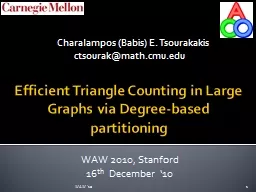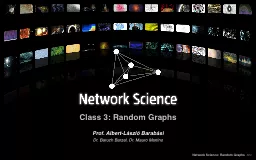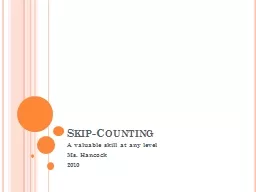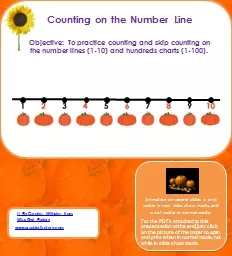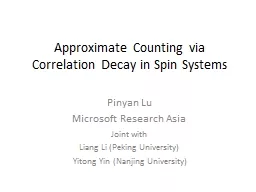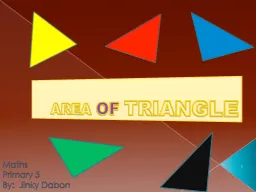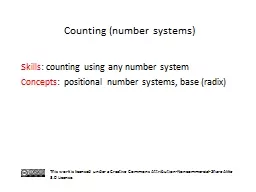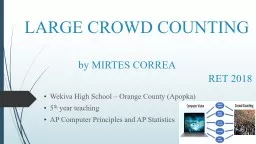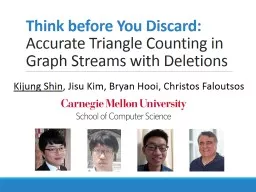PPT-Efficient Triangle Counting in Large Graphs via Degree-base
Author : cheryl-pisano | Published Date : 2016-03-10
Charalampos Babis E Tsourakakis ctsourakmathcmuedu WAW 2010 Stanford 16 th December 10 WAW 10 1 Joint work Richard Peng SCS CMU Gary L Miller
Presentation Embed Code
Download Presentation
Download Presentation The PPT/PDF document "Efficient Triangle Counting in Large Gra..." is the property of its rightful owner. Permission is granted to download and print the materials on this website for personal, non-commercial use only, and to display it on your personal computer provided you do not modify the materials and that you retain all copyright notices contained in the materials. By downloading content from our website, you accept the terms of this agreement.
Efficient Triangle Counting in Large Graphs via Degree-base: Transcript
Download Rules Of Document
"Efficient Triangle Counting in Large Graphs via Degree-base"The content belongs to its owner. You may download and print it for personal use, without modification, and keep all copyright notices. By downloading, you agree to these terms.
Related Documents

